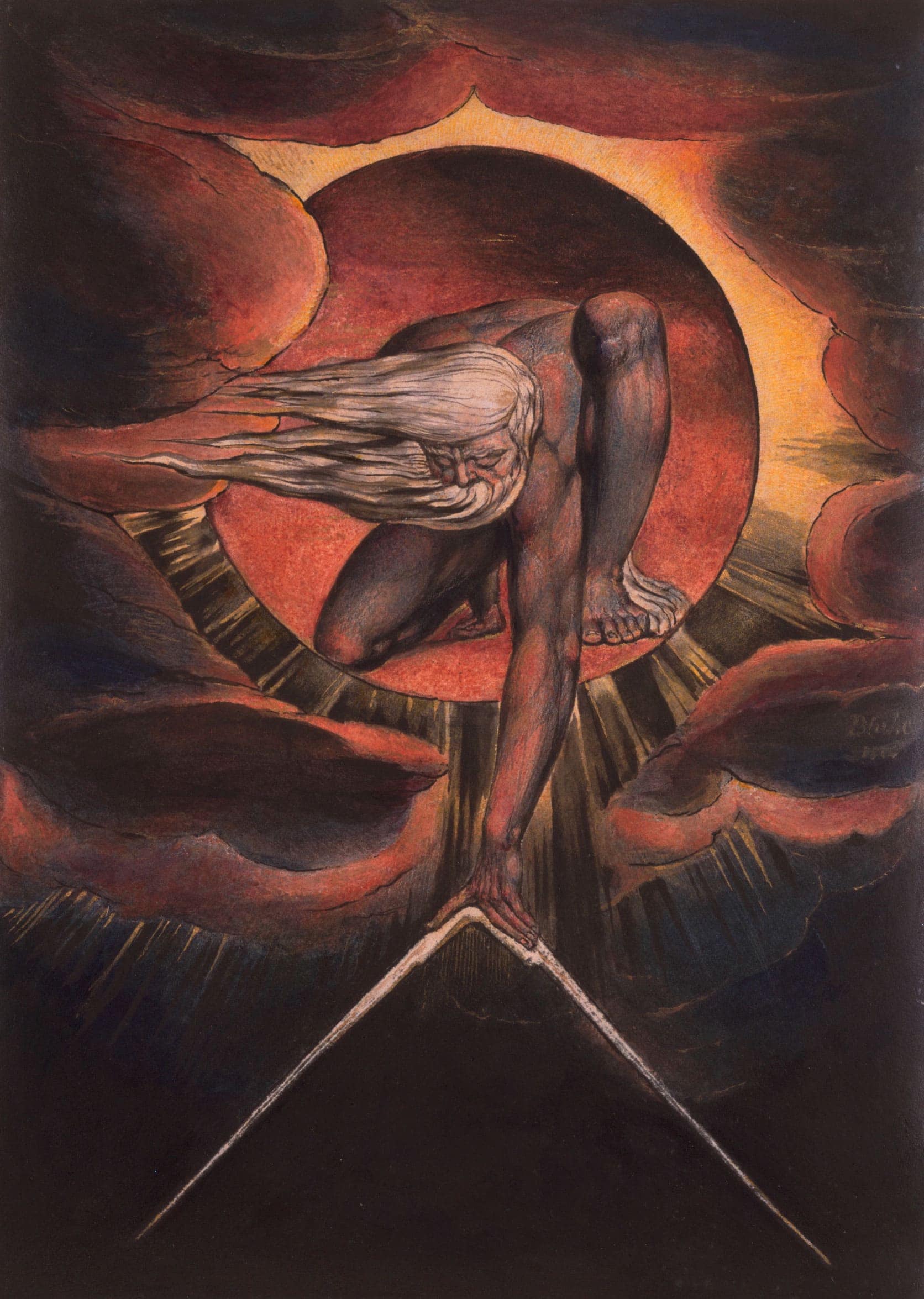
Rather cleverly, the first work to greet visitors to this new and exhaustive survey of painter, printmaker and poet William Blake’s vast output (though ‘greet’ is hardly the word) is a self-portrait that seems to serve as a kind of sentinel for the rest of the exhibition. Drawn when Blake was about 45, the artist’s eyes stare out at the viewer with an expression of extraordinary and implacable intensity. If not quite ‘abandon hope, all ye who enter here’, the message might well be: ‘If all you want is to look at some nice pictures, don’t dare take another step.’
I had wondered, given the timing of this exhibition and our current political crisis, whether Blake’s ideas about England and nationhood might be given further exploration. After all, ask the average Brit what they know about William Blake and it’s likely the first thing that comes to mind is the stirring patriotic hymn ‘Jerusalem’, Hubert Parry’s setting of a tiny fragment of the book of the same name.
The message might well be: If all you want is to look at some nice pictures, don’t dare take another step
Ironically, most scholars agree that Parry (along with then Poet Laureate Robert Bridges, who suggested he set the verses to raise morale during World War One) misses Blake’s point entirely. The original ‘Jerusalem’ is Blake’s longest illuminated book, worked on for over sixteen years. It is a highly symbolic and typically fantastical tome in which England – under the guise of ‘Albion’ – is infected with a disease of the soul. Religion’s true message has been obscured and only the reunification of Albion with Jerusalem can remedy the plight of humanity. A likely critique of circumstances like industrialisation and Britain during the Napoleonic Wars it may be, but Jerusalem is certainly no jingoistic tub-thumper.
Even when themes that might refer to ideas about nationhood appear in the exhibition – there is, for example, a striking image of Joseph of Arimathea, referencing the myth of Christ coming to England and planting the Glastonbury Thorn – however ornate its symbolism may be, this pales in significance to the sheer force of the artist’s extraordinary visual imagination.
However ornate its symbolism may be, this pales in significance to the sheer force of the artist’s extraordinary visual imagination.
From the early student drawings based on classical models, the exhibition moves to Blake’s mature work: his trademark illuminated books, poetry as well as tracts like America, a Prophecy, where actual historical events and figures like George Washington rather bizarrely – but entirely characteristically – rub along with invented happenings and Blake’s imagined mythological creations. From here we go on to rooms of gothic and fantastical paintings, usually with biblical or mythological themes, including the artist’s illustrations for Dante’s Divine Comedy. In this we find the instantly recognisable ingredients of Blake’s style, with rams’ horns, tridents, stars, serpents, monstrous creatures all figuring aplenty.
The meaning of many of the works however, especially the illuminated books, with their wild mixture of recorded history and made-up mythology, is not often entirely clear. This is something even the artist’s supporters admitted during Blake’s lifetime; the nature of some of the more fantastical offerings doubtless gave fuel to those who thought Blake – with his admission of seeing visions of angels and the like from the age of nine – simply insane.
Rams’ horns, tridents, stars, serpents and monstrous creatures all figure aplenty
Certainly, there is no denying that some of this stuff really is out there, not least the terrifying monsters and horrors as portrayed in the likes of ‘The Great Red Dragon and the Beast from the Sea’ or ‘The Number of the Beast is 666’ (and, obviously, without much holding back on the titles). In the former, the beast from the sea – a multi-headed, gargoyle-faced creature with arms aloft – rises between the legs of the red dragon, exceedingly like a phallus piercing, or else coming out of, the dragon’s groin. The image is, like many in the exhibition, dark and deeply disturbing.
This exhibition offers as complete a survey as one can imagine of an artist whose work is occasionally bizarre and abstruse, sometimes terrifying, but never less than utterly original and compelling.
The William Blake exhibition at Tate Britain is open until 2 February 2020.


